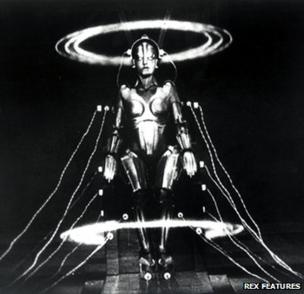
Meet Roxxxy, the sex robot with a triple XXX. Depending on your view, "she" is either at the cutting edge of the human-robot interface, or a modern reflection on some men's difficulties in relating to real-life partners.
While sex aids are nothing new, what makes Roxxxy different is that "we've taken artificial intelligence" and "combined it with a human form," says creator Douglas Hines.
Of course, humanoid robots have been the stuff of science fiction for decades - ever since Fritz Lang's 1927 film Metropolis, or Isaac Asimov's I, Robot stories.
The reality is somewhat more clunky.
Walking robots currently have little commercial value - they are expensive and are prone to falling over if they are placed on anything other than a flat surface.
One of the best of the bunch is Japan's all singing and dancing female robot, HRP-4C, from the National Institute of Advanced Industrial Science and Technology (AIST).
The main drawback of this type of robot is that they have a very short battery life - they only last for about 20 minutes.
It is enough for a rather impressive dancing routine from HRP-4C says the team, but for little else.
"One practical application for biped humanoid robots is the entertainment industry," says AIST "provided the robots can move very realistically like humans."
Loving the robot
In 2007, the British chess player and artificial intelligence (AI) expert David Levy said in his book, Love and Sex with Robots, we would be having sex with robots in five years - and be capable of falling in love with them within 40 years.
His argument is based on improvements in robotic engineering and computer programming - and extrapolating from the income generated by the porn industry each year.

Such robots would be a "terrific service" for mankind, he argued.
As for Roxxxy, she weighs in at 60lb (27kg) is 5ft 7in (1.70m) high and comes with a variety of hair colours, moveable limbs and 'lifelike' skin.
She is the brainchild of electrical engineer and computer scientist Douglas Hines, the founder of TC Systems and True Companion, who formerly worked in the artificial intelligence lab at AT&T Bell Laboratories.
He says the sex robot developed from his firm's line of healthcare robots, which were designed to look after elderly or infirm patients.
"Our skill-set is based on commercial and military robotics and what we did is we looked for an opportunity in the marketplace to apply that technology.
"One very obvious market is healthcare - but there's a less-known which is gaining more and more momentum which is the sex industry."
'Exciting time'
Mr Hines says his aim in developing his robot's artificial intelligence engine, was to go beyond a simple sex aid and to provide companionship.
"The life experience with a partner goes beyond that - and that's really what we've gone for," he told BBC World Service's Business Daily programme.
However, no matter how well-programmed a robot may be, it is still a machine, and he agrees a plastic and metal humanoid is not capable of replacing the real thing - yet.
"We are getting closer and closer. The gap between what is robotic and mechanical and what's human-like will minimise, so it's a very exciting time."
Roxxxy costs up to $9,000 (£5,700) and there is also a male version called Rocky. Later this year the company plans a more advanced model which it says will be mobile and autonomous.
At the heart of our relationships with such machines, fictional or not, is the question of what it means to be human and to relate to others.
While no machine, however well-engineered, can ever feel empathy - something which defines us humans - it might be able to simulate it well enough to allow us to play along and treat it as if it were a sentient being.
Novelty appeal

But will there ever be more than a fetish or novelty appeal in such robots?
In a survey earlier this year, one-in-11 people - some 9% - told a YouGov poll for the Huffington Post in the US that they would be prepared to have sex with a robot.
That works out at over 25 million Americans - which could translate into a lot of robot sales.
Yet critics caution that we should not be too quick to embrace robots like Roxxxy.
"It is time to reconsider the premise that a robot is better than nothing," says Sherry Turkle, psychologist and professor at the Massachusetts Institute of Technology.
"Because, if you are trying to solve the problem of care and companionship with a robot, you are not trying to solve it with the people you need to solve it with - friends, family, community."
Not promising
"We may think we are only making robots," she told this year's meeting of the American Association for the Advancement of Science, "but really we are re-making human values and connections.
"The pretend self of a robot calls forth the pretend self of a person performing for it," she said.
And that, she says is not promising "for adults trying to live authentically and navigate life's real, human problems".



No comments:
Post a Comment